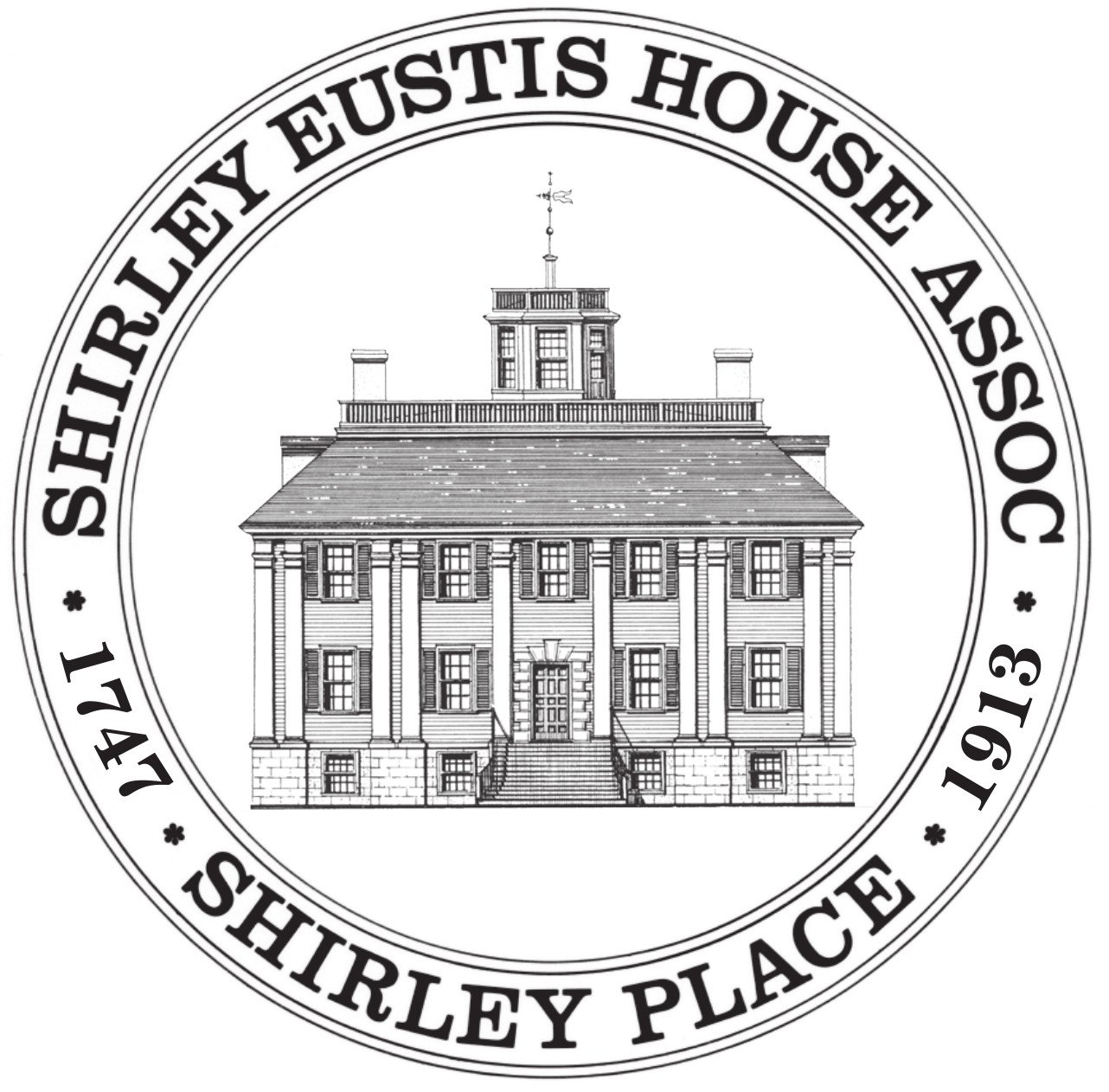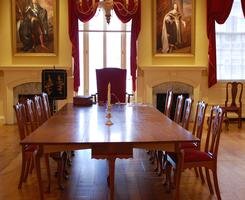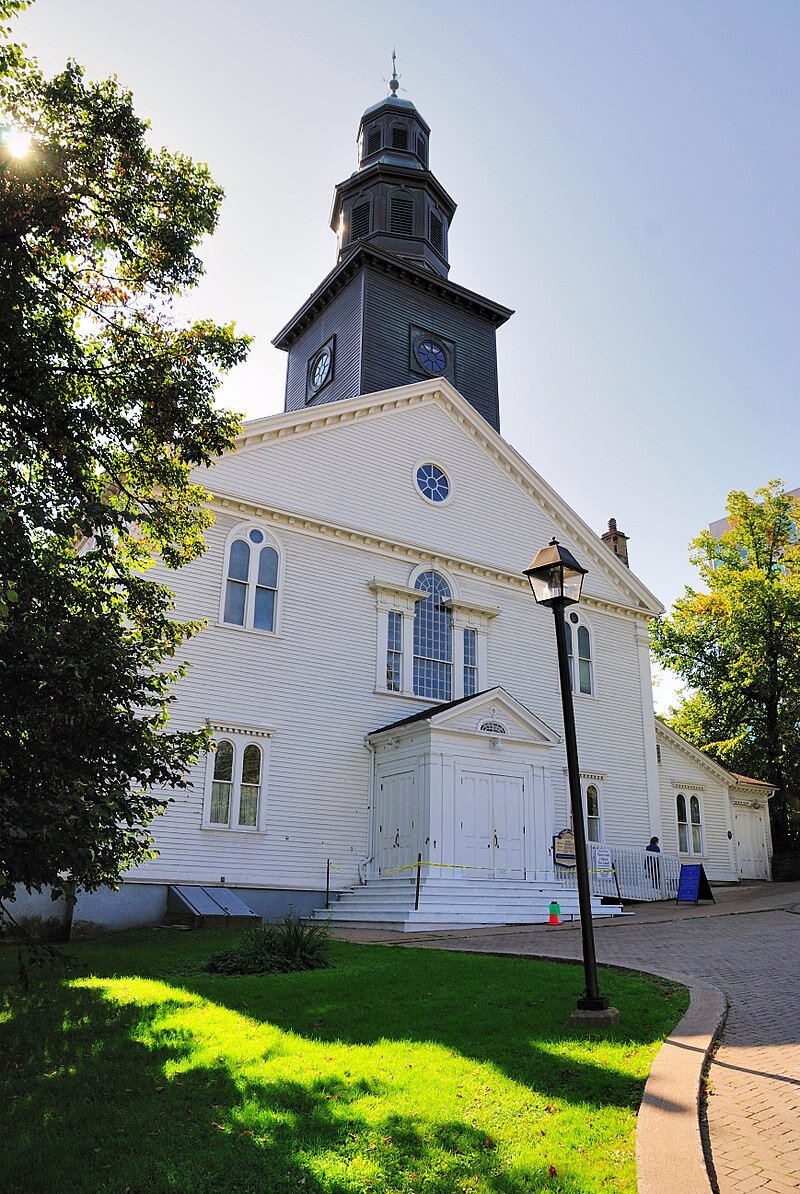His Excellency Royal Governor William Shirley knew how crucial Peter Harrison had been to the success of the capture of the fort at Louisbourg in 1745, so he sought to reward him in a number of ways. First, he asked him to design some important buildings for him, including his own country estate in Roxbury. Harrison thought that such an important man as Shirley should have a cut-stone house, which is what he drew for him. Shirley gently suggested that there were then no stone quarries in Massachusetts, and further, he could not afford to import either the stonework or the men who could put the stones together, but he would be happy to have a wooden house. Harrison obliged, with a wooden house in which the planked siding was carved so as to look like stone, an invention attributed to Harrison and known as rusticated wood.
Shirley also encouraged Harrison to propose marriage to Elizabeth Pelham in spite of some opposition from her family, who thought that as one of the wealthiest unmarried women in New England she could do better than a mere architect. They were married on 6 June 1746.
Shirley then asked Harrison to redesign Boston’s Old Statehouse, which had just burned down, and to replace the ancient King’s Chapel with a new building (which was never finished). Shirley was also involved with founding a new capital for Nova Scotia at Halifax, so he had Harrison design Saint Paul’s Church there, and he asked him to design the Nova Scotia Statehouse. For the Statehouse, Harrison designed three versions, small, medium, and large; the large was eventually built in 1813, but the other two were also built, the small as Osgoode Hall in Toronto, and the medium as the courthouse at Saint John, New Brunswick. Governor John Wentworth also asked him to design a statehouse for New Hampshire, but the Legislature refused to pay for it, and the design was eventually used in Toronto.
Above left: the Governor’s Council Chamber in the Old State House which was recently restored to its 18th century appearance. Right: St. Paul’s Church in Halifax, Nova Scotia, said to be the oldest surviving building in Halifax today.
Shirley wrote to all the other British colonies and suggested that they engage Harrison to design any statehouse, courthouse, governor’s mansion, church, or college that they might need, and some of them did, including Williamsburg, Virginia where the Capitol had just burned down. Shirley even got Harrison to design a statehouse for Newfoundland in 1749, but they were in no hurry to build it: it was finally built in 1849, but it burned down only a few years later.
Shirley participated in the peace conference at Aix-les-Bains (Aachen), so he procured a diplomatic passport for Harrison to visit France and Germany to see what their architecture was like. At Besançon, he saw the Church of Sainte Madeleine under construction with its columns grouped in pairs, and he later used the same motif at King’s Chapel. In Berlin, he saw the new opera House at Unter-den-Linden and it influenced the Douglass-Hallam Theatre he designed for Kingston, Jamaica.
The Church of Saint Madeleine in Besançon built in 1746. Harrison was inspired by the double embedded columns flanking the main entrance at the right.
Shirley arranged that Harrison should come to the British Isles to meet top officials. He stopped first in Dublin, where Archbishop Arthur Price asked him to design a new cathedral, three parish churches, twelve schools affiliated with the cathedral, three hospitals, and other buildings. You may not have heard of Arthur Price, but he is the man who gave the Guinness family his top-secret recipe for stout in 1753!
Then Harrison stopped in Liverpool, where they asked him to design their large new Town Hall and three churches. When he reached London, he was introduced to George II, who asked him to design a government building in Dublin and two buildings in his native Germany. Prime Minister Pelham, who was a cousin of Harrison's wife, had him design buildings at both Oxford and Cambridge. The Lord Mayor of London had him design three important buildings (one of which was for the new British Museum, but officials ran out of money and never built it), and the High Sheriff of London had him design his very Palladian country house with a dome. Shirley’s cousin, Admiral Washington Shirley, commissioned a country house, Staunton Harold, and a Wentworth cousin ordered a new front to Wentworth Castle, which Horace Walpole famously described as the most tasteful house design in Britain.
Harrison was also introduced to Richard Chauncey, Chairman of the East India Company, which had benefitted so much from Harrison’s work at Louisbourg. Chauncey made sure that Harrison was engaged to design buildings in Saint Helena, Surat, Bombay, Cuddalore, Madras, Calcutta, Bengkulu (Java), and thirteen “Hongs” for the fifteen trading nations at Canton, China, as well as Christ Church there. Harrison became the first person in the history of the world to design buildings on every known continent, with eventually a total of six hundred buildings worldwide.



